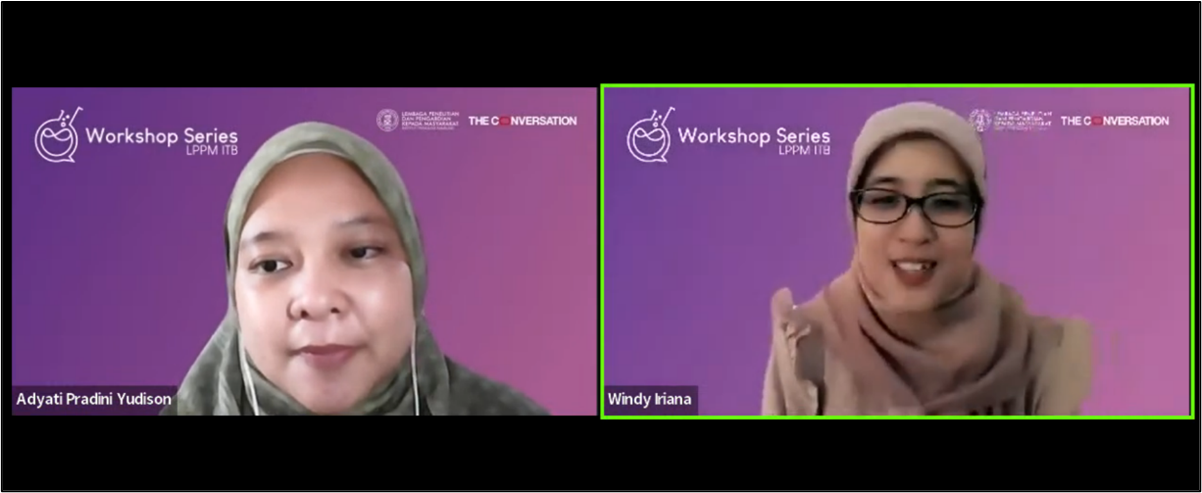Insights from ITB, DJPPR, and The World Bank on Indonesia’s Disaster Risk Financing
By M. Naufal Hafizh, S.S.
Editor M. Naufal Hafizh, S.S.

BANDUNG, itb.ac.id – The Faculty of Earth Sciences and Technology at Institut Teknologi Bandung (FEST ITB) organized "The 3rd International Seminar on Earth Sciences and Technology (ISEST) 2024". This year's ISEST featured the theme "Navigating the Changing World Through Earth Sciences and Technology".
ISEST encompassed various activities, one of which was a special seminar session on "Disaster Risk Financing" held at the CRCS Building on Wednesday (18/9/2024). This session presented four experts in their respective fields.
Prof. Dr. Irwan Meilano, S.T., M.Sc., from the Spatial Systems and Cadastre Research Group at FEST ITB, presented research on “Innovative Analytical Tools for Enhancing Disaster Risk Financing in Indonesia.” He explained how loss data and risk models provide valuable insights for data-driven analysis. This helps in decision-making by understanding the scope and scale of potential disaster risks.
“This research aims to develop a spatial-based state financial risk model to address losses caused by natural disasters. The model is compiled based on the affected area, type of disaster, and exposed assets, and includes relevant financial instruments,” said Prof. Irwan.
The research findings provide support for fiscal policy and planning. Fiscal policymakers can set thresholds for losses to be retained, transferred, or exceeded. Furthermore, the Planning Agency can design innovative disaster financing tools. The research also contributes to the insurance sector, where data on insured exposure and disaster losses are used to generate 6 risk matrices covering 9 disaster types.

Meanwhile, Dr. Nicolas Pondard, Senior Disaster Risk Financing Consultant at The World Bank, discussed “Catastrophe Risk Modeling: Core Principles for Disaster Risk Financing”. He outlined key principles in disaster risk financing which serves as a framework for evaluating policies and financial instruments. Those principles are funding certainty, fund disbursement, disaster risk layers, and the use of data and analytics.
He also emphasized the importance of risk modeling in determining the cost of adequate risk financing, appropriate levels of financial protection, and exposure to natural hazards within acceptable risk limits.
Dr. Nicholas highlighted that scientific evidence and risk modeling are crucial in making informed financial decisions. Additionally, risk analysis helps evaluating policies and financial instruments.
On the other hand, Roki Gangsar Winoto from the Directorate General of Financing and Risk Management at Indonesia’s Ministry of Finance shared insights on “The Application of Risk Models to Calculate Government of Indonesia Contingent Liabilities and Risk Financing Mitigation”.
He explained that the model plays a key role in assessing contingent liabilities arising from natural disasters. This model is also adaptable to recent changes such as climate change, infrastructure expansion, and economic shifts.
“This model supports the development of a medium-term disaster risk mitigation financing strategy, with the goal of minimizing the residual risk that the government must bear,” he said.
Moreover, Dra. Dumaria Rulina Tampubolon, M.Sc., Ph.D., from the Statistics Research Group at FMNS ITB, presented on “Utilizing an Earthquake Catastrophe Model to Determine Optimal Retention in Earthquake Stop-Loss Reinsurance”.
She mentioned that Indonesia is located at the intersection of four major tectonic plates, causing high earthquake risk. This condition leads to economic losses averaging IDR 7.56 trillion annually. Hence, the funding for earthquake risk needs to be arranged within a certain model.
The modeling procedure involves using earthquake data, average annual losses, reinsurance premium load factors, and optimal retention values to design various stop-loss reinsurance schemes. Based on these schemes and the available budget, appropriate retention levels can be set for national, provincial, and regional budgets. Meanwhile, insurance and reinsurance premiums can then be determined in accordance with the assessed risk levels.
This seminar demonstrated the ongoing collaboration between academics, government, and practitioners to develop effective models for disaster risk financing in Indonesia.
Reporter: Chysara Rabani (Mining Engineering, 2022)
Translator: Hanifa Juliana (Urban and Regional Planning, 2020)
Editor: Ayesha Lativa Mafaza (Postharvest Technology, 2021)

.jpg)

.jpg)
.jpg)
.jpg)

